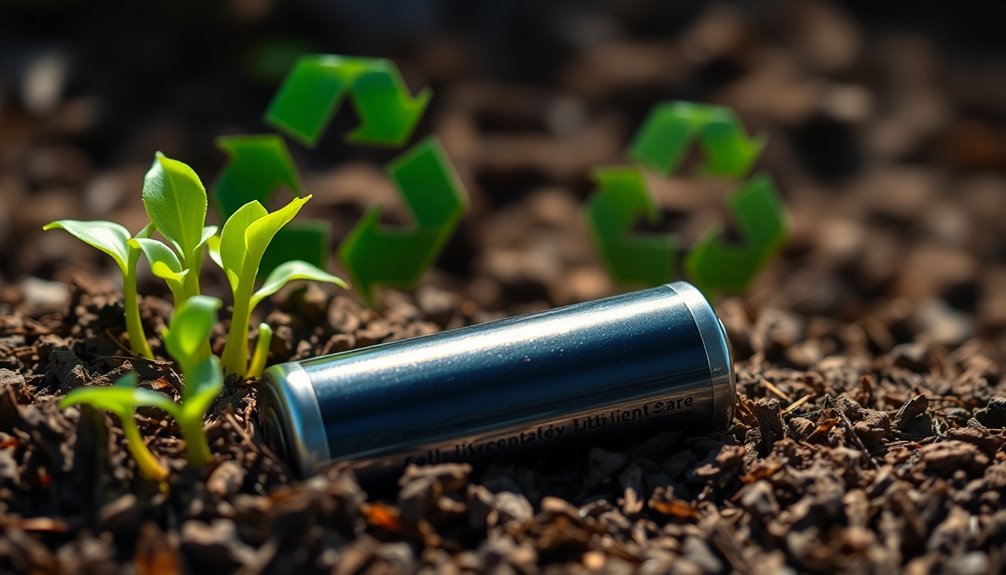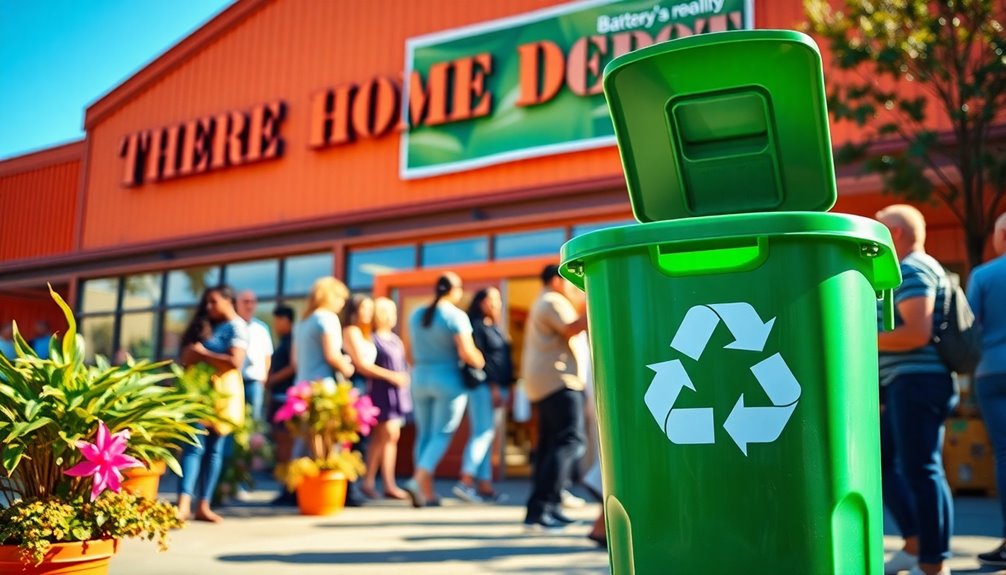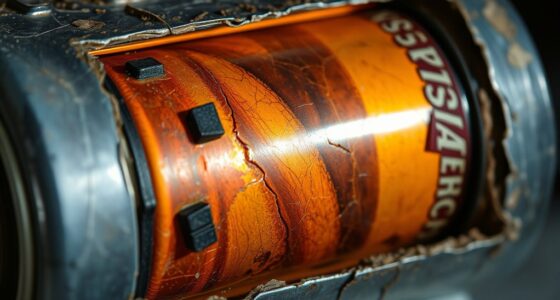Yes, lithium batteries are recyclable, but there's a lot of confusion about it. Many think only 5% get recycled, but current estimates show around 59% actually are. Unfortunately, about 98.3% still end up in landfills, which poses serious environmental risks as toxic metals can leach into our soil and water. Recycling can recover over 90% of valuable materials, yet challenges like complex battery chemistry and high costs slow down progress. Understanding these issues is essential if you want to make informed choices about battery disposal. Stick around to uncover more insights on improving lithium battery recycling.
Key Takeaways
- Lithium-ion batteries are recyclable, with a global recycling rate of approximately 59% as of 2023.
- Many valuable materials can be recovered from used batteries, with recovery rates exceeding 90% using current technologies.
- Improper disposal of lithium-ion batteries poses significant environmental risks, with 98.3% ending up in landfills.
- The complexity of battery chemistry and high recycling costs hinder widespread adoption of recycling practices.
- Innovations and collaborations are essential for improving recycling processes and addressing the growing demand for battery recycling.
The 5% Recycling Myth
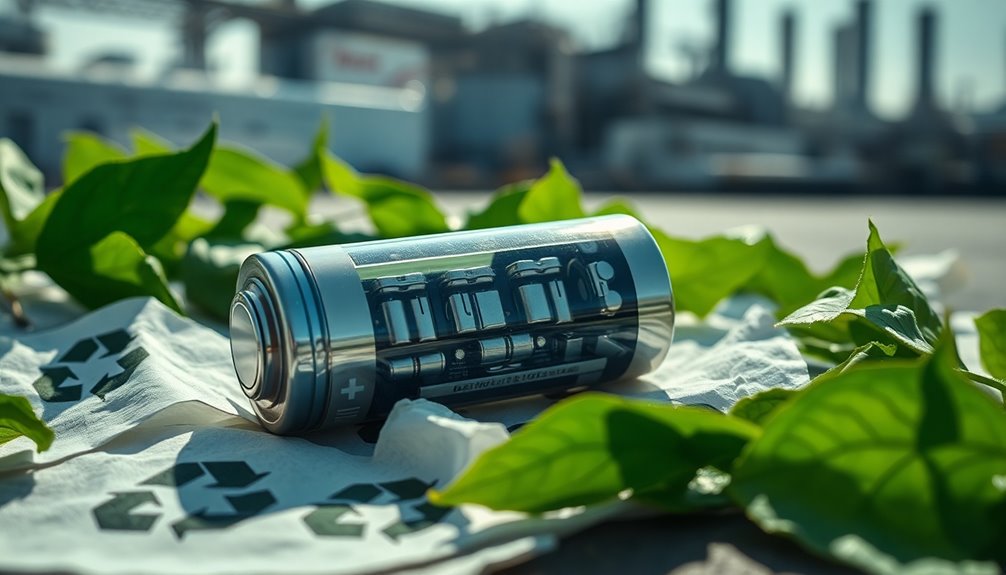
There's a pervasive myth that only 5% of lithium-ion batteries are recycled, but this figure is based on a misunderstanding of data rather than actual recycling rates.
The 5% recycling myth, popularized by a 2016 Friends of the Earth report, misinterpreted battery collection data. In reality, a 2023 estimate shows that about 59% of end-of-life batteries are recycled globally.
Many lithium-ion batteries remain embedded in products, complicating accurate assessments of recycling rates. With existing technologies, recovery rates for valuable materials in these batteries can exceed 90%, showcasing the efficiency of recycling processes.
Understanding the true recycling rates can help mitigate the Environmental Impact of Lithium-ion batteries and improve the recovery of essential battery components.
Current Recycling Rates
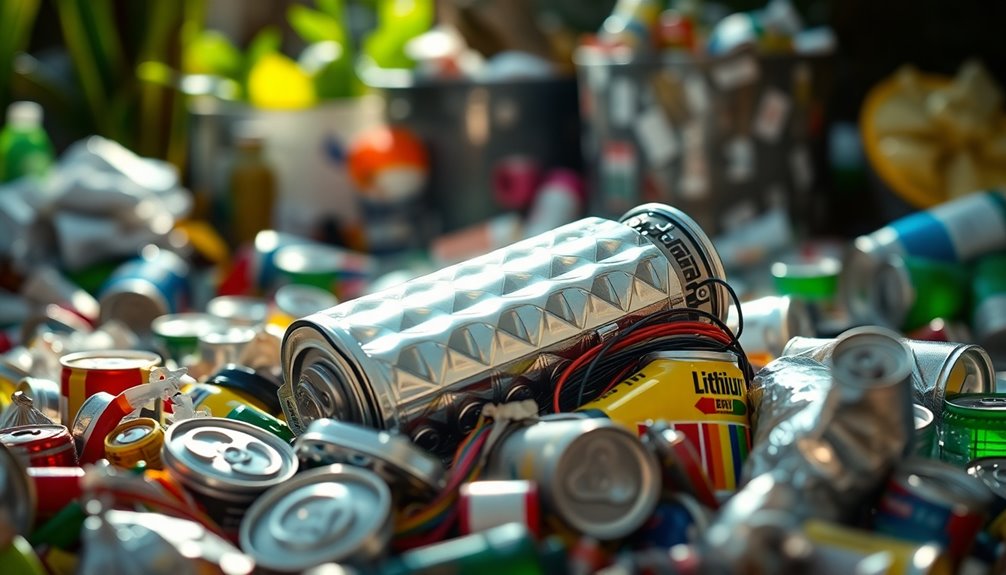
As of 2023, the global recycling rate for end-of-life lithium-ion batteries stands at around 59%, a notable increase that challenges previous misconceptions about recycling efficiency.
While this figure is encouraging, it's alarming that approximately 98.3% of these batteries still end up in landfills, posing significant environmental risks. Many lithium-ion batteries remain embedded in products, complicating disposal and actual recycling rates.
However, recovery rates for critical minerals from lithium-ion batteries can exceed 90% with current technologies, highlighting the potential for effective recycling practices.
Misinterpretations of data have led to confusion, such as the inaccurate 5% recycling figure. By understanding the true status of recycling rates, you can better appreciate the importance of responsible battery disposal.
Challenges in Battery Recycling
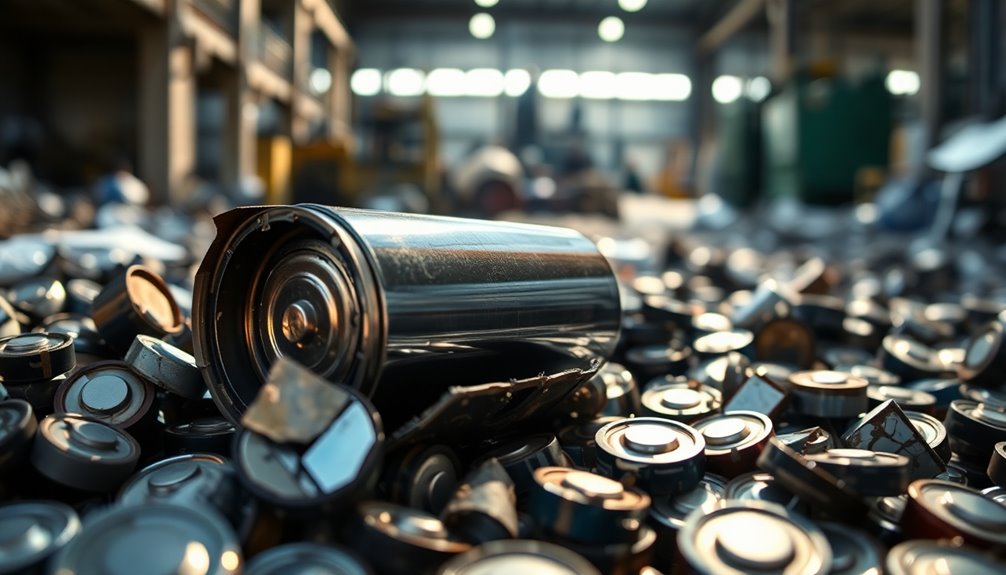
Although lithium-ion batteries offer tremendous advantages, their recycling presents significant challenges that hinder effective recovery. Only 5% of these batteries are currently recycled globally, largely due to the complex recycling process. The variability in battery chemistry and the use of tough adhesives make disassembly costly and difficult.
Furthermore, improper disposal poses serious environmental risks, with 98.3% ending up in landfills, where they can release toxic metals and create hazardous leachate. Damaged batteries are classified as class 9 hazardous materials, complicating transportation and disposal.
Additionally, current recycling costs often exceed raw material mining expenses, which discourages widespread adoption of efficient recycling practices for lithium-ion batteries. Addressing these challenges is vital for reducing battery waste and improving sustainability.
Environmental Impacts of Disposal
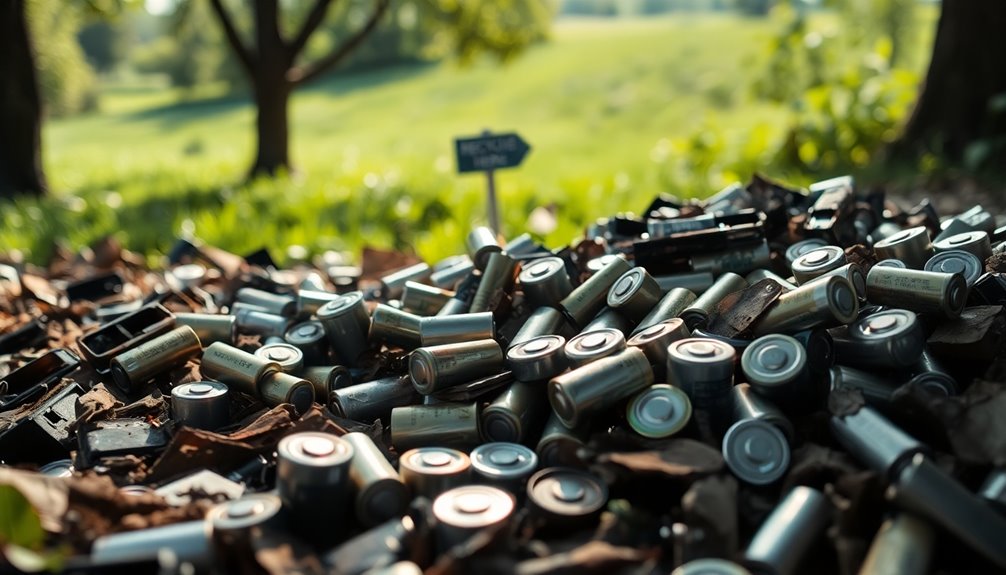
When lithium-ion batteries are improperly disposed of, they can cause severe environmental damage. An alarming 98.3% of these batteries end up in landfills, creating significant environmental risks.
Toxic chemicals can leach into the soil and groundwater, contaminating local ecosystems and posing health risks to nearby communities. The hazardous leachate generated from landfill disposal affects both plant and animal life, leading to devastating consequences.
Additionally, damaged batteries may emit harmful particles, including hydrofluoric acid. With an average life cycle of just three years, the substantial waste generated continues to escalate.
Recycling batteries is essential, yet the dangers associated with improper disposal highlight the urgent need for responsible battery management to protect our environment and health.
Future of Lithium Battery Recycling

Improper disposal of lithium-ion batteries has created a pressing environmental crisis, highlighting the urgent need for effective recycling solutions.
The future of lithium battery recycling looks promising, with the demand for recycling projected to reach 230 GWh by 2030. Innovations in recycling technologies, like "Ready Shred" and "Ready Cycle," are set to enhance metal recovery, minimizing the environmental impact of battery waste.
Collaborations among startups and industry leaders will be essential in developing a sustainable system for managing lithium-ion battery materials. Emerging techniques, such as bioleaching with genetically modified bacteria, might revolutionize metal recovery processes.
As the demand for battery-grade materials increases, the industry can move towards a circular economy, ensuring responsible lithium-ion battery production and disposal practices.
Frequently Asked Questions
What Percentage of Lithium Batteries Are Actually Recycled?
You might be surprised to learn that as of 2023, about 59% of lithium-ion batteries are actually recycled.
This figure has improved markedly from earlier estimates, which were based on misunderstandings of collection versus recycling rates.
While many batteries still linger in consumer products, the recycling processes themselves are quite efficient, recovering over 90% of key minerals.
Are Tesla Batteries 100% Recyclable?
No, Tesla batteries aren't 100% recyclable.
While they've a high recovery rate for metals like nickel and cobalt, global recycling rates for lithium-ion batteries hover around 59%.
The complexity of their design, especially with embedded batteries in vehicles, complicates the recycling process.
However, Tesla's innovations and their Gigafactory's recycling initiatives are aimed at improving recovery rates.
Is Recycling Lithium Batteries Environmentally Friendly?
Recycling lithium batteries can be environmentally friendly, but it's not without challenges.
While recycling methods can recover over 90% of valuable metals like nickel and cobalt, only about 59% of batteries are currently recycled.
If you recycle your lithium batteries properly, you help reduce landfill waste and prevent toxic materials from contaminating the soil and water.
Supporting advancements in recycling technology can further enhance these efforts and contribute to a more sustainable future.
Are Lithium Batteries Worse for the Environment Than Fossil Fuels?
Imagine a small town reliant on lithium mining during a severe drought.
You might think lithium batteries are greener, but their production emits more CO2 than gasoline vehicles.
With over 98% ending up in landfills, they risk contaminating water sources.
Plus, mining consumes vast amounts of freshwater.
Conclusion
So, are lithium batteries recyclable? The truth is, while they can be recycled, current rates are dismally low, and challenges persist in the process. With improper disposal leading to significant environmental harm, it's vital to push for better recycling practices. By staying informed and advocating for change, you can play a part in improving the future of lithium battery recycling. Together, we can turn the tide and guarantee these batteries don't end up as hazardous waste.

